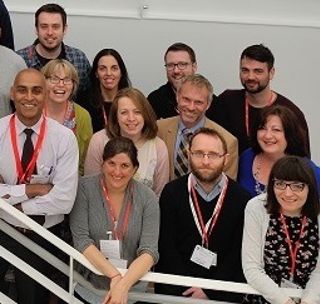
Academy network gathers for space education Symposium
- 24th Apr 2015
For two days each year, the National Space Academy brings together its entire national network members to provide them with an overview of current scientific and engineering research going on in the space sector.
This year's symposium was hosted at the Rutherford Appleton Laboratory and was the largest to date, as 35 teachers from schools from all corners of the United Kingdom came together to hear talks from scientists at the RAL Space Department, as well as guest speakers from the European Space Agency, the UK Space Agency, ESERO-UK, the British Geological Survey, the Open University, Space Studio Banbury and the Satellite Applications Catapult.
Updates included:
· Results from the Rosetta mission's Ptolemy instrument
· Observing the sun and space weather phenomena
· The education programme for the first British ESA Astronaut Tim Peake
· The next steps towards Mars, and the current update from the Mars Curiosity Rover
· How satellites are driving the space industry and being used to support life on Earth
The evening of the second day was brought to an end by a keynote speech from Professor Richard Holdaway, Head of the RAL Space Department; who gave a reflective talk on how the space industry has changed, and his predictions on its future.
His talk was fortuitously followed by a crystal clear view of the International Space Station as it passed overhead.
Factored into the two day programme was the opportunity to tour some of the world leading facilities located at the Rutherford Appleton Laboratory, including the RAL Space Facilities; where cameras and detectors for ground based and space based telescopes and spacecraft are tested to ensure they survive not only the harsh conditions of space, but also the launch itself. Also on the tour itinerary was the Diamond Light Source: one of the world's leading particle accelerators, which utilises a waste product of electrons to produce high energy X-rays for probing matter on a sub-atomic scale.
Not only was the symposium a great opportunity for the teachers, most of whom are Academy Lead Educators, to hear about how the industry is progressing, but to voice their opinions and bring their perspective of how the educational landscape connects with the industry. Lead Educators are seconded to the Academy from their schools in order to deliver masterclasses and CPD, and events like the symposium allow them to develop up-to-date space contexts for curriculum-relevant classroom activities.
Having left the Rutherford Appleton Laboratory exhausted and topped full to the brim with new knowledge the National Space Academy network is ready to implement new ideas in the upcoming year and to ensure that by next year's symposium there will be even more space education content to share.
"Superb scientists and experts, great experiences on RAL tours. Inspirational talks on most up to date science" Caroline Molyneux, Sharples School
"A good opportunity to get an update on space at the cutting edge. These events are a great opportunity to stay up to date and network" Hayley Flood, Space Studio Banbury
"The range and depth of talks definitely increased my space knowledge" Emma Nichols, The Ogden Trust
